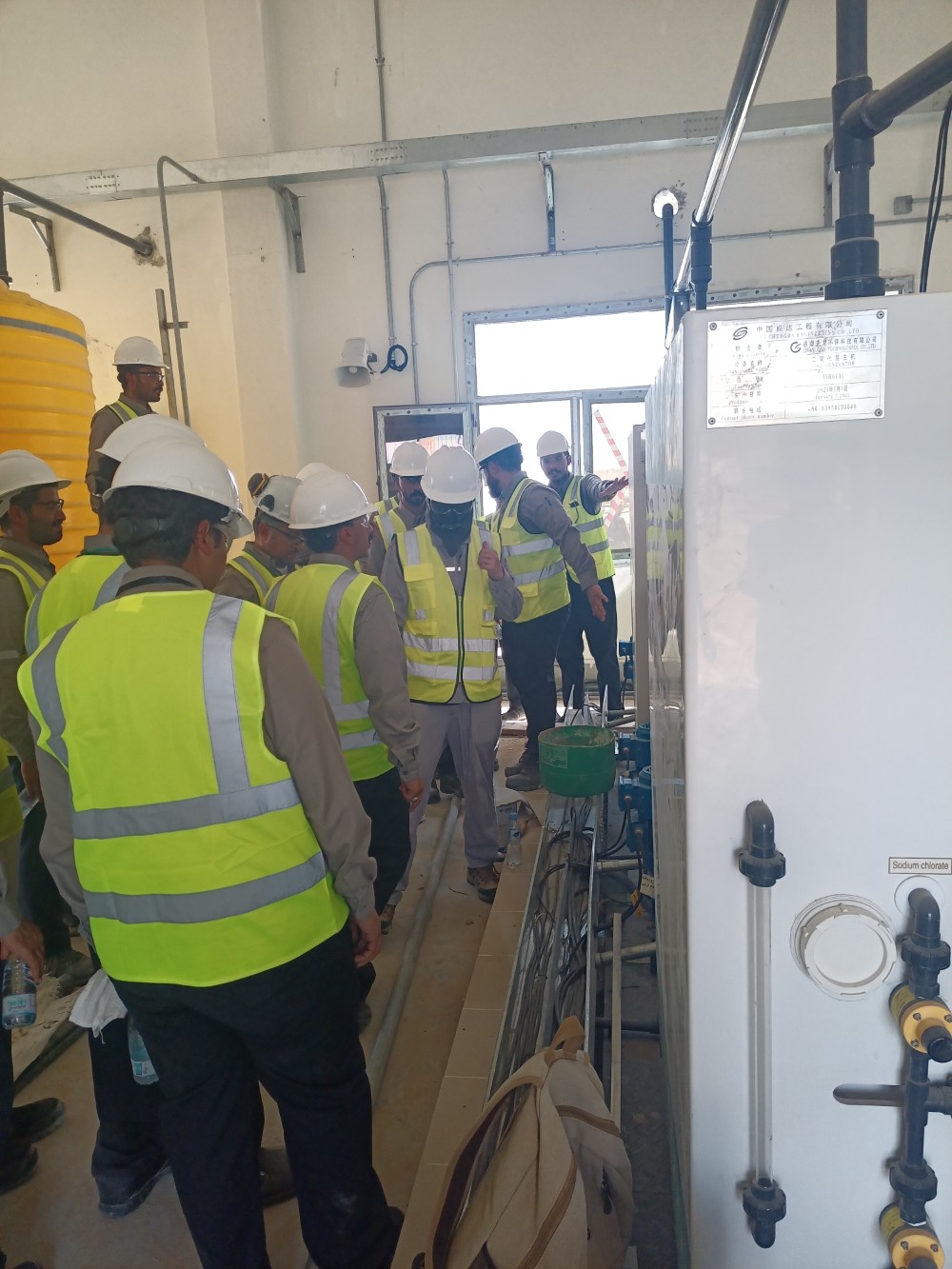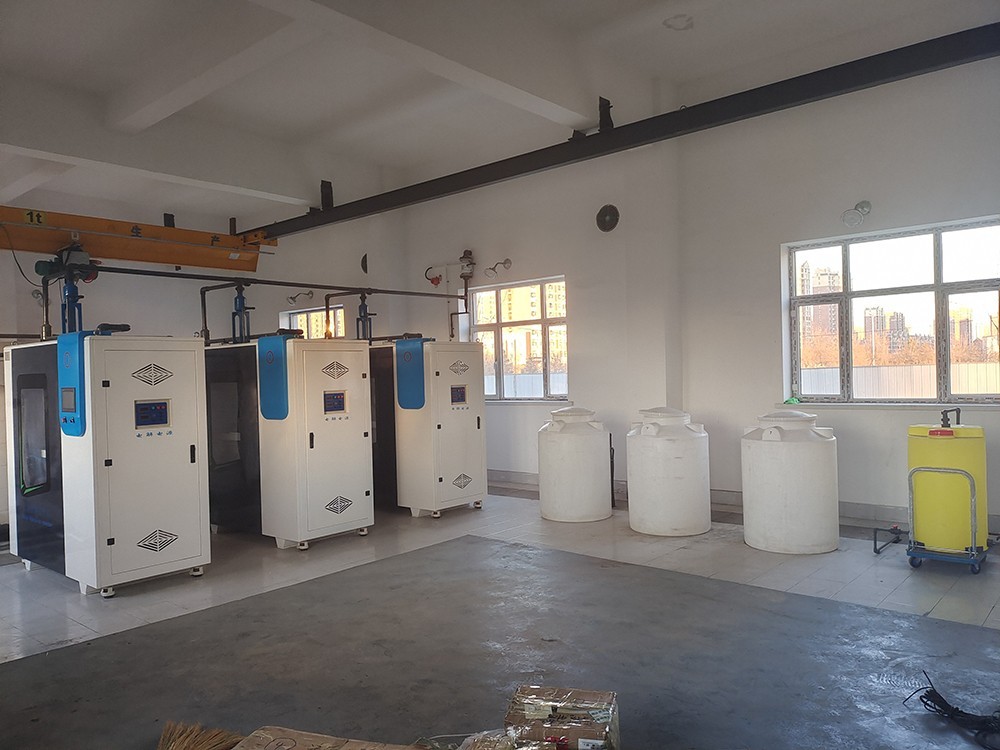How Does an On-Site Hypochlorite Production System Work?
Introduction
Ever wondered how water treatment facilities produce the disinfectants that keep your water safe? It all starts with an On-Site Hypochlorite Production System.
This innovative system generates sodium hypochlorite (NaOCl) on-site, ensuring fresh and effective disinfection.
4o mini But how does it work, and why is it such a game changer for water treatment plants? Let’s dive deep into the world of on-site low-strength sodium hypochlorite generators.

What is an On-Site Hypochlorite Production System?
An On-Site Hypochlorite Production System is a device used to generate sodium hypochlorite from salt, water, and electricity.
Sodium hypochlorite, commonly known as bleach, is a powerful disinfectant used in water treatment, sanitation, and various industrial processes. By producing sodium hypochlorite directly on-site, facilities can avoid the need for transportation and storage of hazardous chemicals.
Key Features:
· Efficient: Produces sodium hypochlorite as needed.
· Safe: Reduces the risk associated with handling concentrated chemicals.
· Cost-Effective: Lowers transportation and storage costs.
How Does an On-Site Hypochlorite Production System Work?
An On-Site Hypochlorite Production System uses three basic ingredients: salt (sodium chloride), water, and electricity. Here’s how it works:
Step-by-Step Process:
1. Brine Preparation: The system begins by mixing salt (NaCl) with water to create a salt solution, or brine.
2. Electrolysis: This brine solution is passed through an electrolytic cell, where an electric current is applied. The electricity splits the salt molecules into sodium (Na+) and chlorine (Cl-).
3. Formation of Sodium Hypochlorite: Sodium ions mix with water, and chlorine reacts with water to create sodium hypochlorite.
4. Final Product: The resulting solution is a low-strength sodium hypochlorite (0.8% NaOCl), ready for immediate use.
Why Choose On-Site Production Over Commercial Bleach?
Water treatment facilities once relied on commercial bleach, but on-site hypochlorite generators have transformed the process. Why?
Benefits of On-Site Systems:
· Freshness: Sodium hypochlorite degrades over time. Producing it on-site ensures it’s always fresh and potent.
· Reduced Risk: Commercial bleach is hazardous to transport and store in large quantities.
· Cost Savings: On-site systems reduce expenses related to purchasing, transporting, and storing concentrated bleach.
· Environmental Benefits: No need for long-distance transportation of chemicals, reducing carbon emissions.
Components of an On-Site Hypochlorite Production System
Understanding the system’s components helps clarify how everything works. The main parts of an On-Site Low-Strength Sodium hypochlorite generator include:
1. Brine Tank: Stores the saltwater solution.
2. Electrolytic Cell: The heart of the system where electrolysis takes place.
3. Power Supply: Provides the electrical current required for the electrolysis process.
4. Control Panel: Manages the flow of the process and ensures proper functioning.
5. Storage Tank: Holds the generated sodium hypochlorite solution until needed.

The Importance of Proper Maintenance
Maintaining an On-Site Hypochlorite Production System is crucial to its efficiency and longevity. Regular maintenance ensures that the system continues to operate smoothly, reducing the risk of breakdowns.
Maintenance Checklist:
· Brine Tank Cleaning: Prevent salt buildup and ensure consistent brine quality.
· Electrolytic Cell Inspection: Check for wear and tear and clean electrodes.
· Power Supply Check: Ensure steady electrical output.
· Software Updates: Keep the control panel's software up-to-date for maximum efficiency.
Common Applications of On-Site Hypochlorite Production
You might wonder where on-site water system hypochlorite generators are used. The most common applications include:
Applications:
· Water Treatment Facilities: Disinfecting drinking water and wastewater.
· Swimming Pools: Maintaining clean and safe pool water.
· Food and Beverage Industry: Sanitizing equipment and facilities.
· Cooling Towers: Preventing the growth of biofilms and microorganisms.
How Safe is an On-Site Hypochlorite Production System?
Safety is key, and an On-Site Hypochlorite Production System provides many safety advantages over handling traditional bleach.
Safety Features:
· Reduced Handling of Chemicals: No need to handle concentrated bleach, reducing the risk of spills or exposure.
· Automated systems operate with minimal human error.
· Built-in Alarms: Systems include alarms for overflows, power outages, and other malfunctions.
Environmental Impact of On-Site Systems
Switching to an on-site hypochlorite generator significantly reduces the environmental impact of water treatment.
Environmental Benefits:
· Less Chemical Waste: Only the required amount of sodium hypochlorite is produced.
· Reduced Transportation Emissions: No need to transport chemicals over long distances.
· Lower Carbon Footprint: By generating sodium hypochlorite on-site, facilities minimize their overall environmental footprint.

Comparing On-Site Production to Other Disinfection Methods
How does the On-Site Hypochlorite Production System compare to other disinfection technologies like UV or ozone?
Pros of Sodium Hypochlorite:
· Residual Disinfection: Continues to disinfect water after treatment, unlike UV or ozone, which don’t leave a residual.
· Cost-Effective: Cheaper than ozone and less complex than UV.
· Proven Technology: Sodium hypochlorite has been used for decades with a solid safety record.
Can You Scale an On-Site Hypochlorite Production System?
Yes! One of the greatest advantages of on-site production is its scalability. These systems can be customized to fit your needs, whether for a small building or a large city's water treatment plant.
Factors to Consider When Choosing an On-Site System
Before selecting an On-Site Low-Strength Sodium Hypochlorite Generator, it’s essential to consider a few critical factors:
Key Considerations:
· Capacity Requirements: How much sodium hypochlorite does your facility need daily?
· Space: Do you have enough space for the system’s components?
· Budget: What is the upfront cost, and how does it compare to long-term savings?
The Future of On-Site Hypochlorite Production
With advancements in technology, the future of on-site hypochlorite production looks promising.
Innovations on the Horizon:
· Energy Efficiency: New systems are being designed to use less electricity.
· Smaller Footprint: Future systems may require less space, making them more accessible for smaller facilities.
· Automation: More intuitive control systems with AI integration could revolutionize on-site production.
How Much Does an On-Site Hypochlorite Production System Cost?
Costs vary depending on the size and complexity of the system. The initial cost may be high, but most facilities consider it a worthwhile investment. Over time, the system lowers chemical and operational expenses.
Conclusion: The Smart Choice for Water Treatment
In conclusion, On-Site Hypochlorite Production Systems offer a safe, cost-effective, and environmentally friendly solution for generating sodium hypochlorite on demand. These generators can be tailored to meet your needs, whether for a small pool or a large municipal water system.
References:
1. Water Environment Federation
